TickerTape
Weekly Digital Currency Briefing:
Stablecoins, Regulation, and Global Adoption

This Week’s Stories
- Tether Launches Omnichain Gold Stablecoin (XAUt0)
- 21X Integrates USDC for Tokenized Securities
- Artemis Report: Real-World Stablecoin Payments
- Kazakhstan Launches Crypto Card & Digital Finance Push
- BCP Launches First Regulated GBP Stablecoin (tGB)
- BCB Markets Partners on Euro Stablecoin (EURCV)
- Tether Invests in LATAM Stablecoin Infrastructure (Orionx)
- Ripple’s RLUSD Stablecoin Approved in UAE
- BVNK Partners for Cross-Border Payments
- BCB to Use DREX Data for Interest Rate Calculations
- NBX Becomes Norway’s First Public Bitcoin Treasury Company
- HM Treasury Announces Stablecoin Regulation Consultation
- Circle IPOs
- CITIC Hong Kong Stablecoin Report
Tether has announced a partnership with the TON Foundation to launch “XAUt0,” an omnichain version of its gold-backed stablecoin. Built on LayerZero’s Omnichain Fungible Token standard, XAUt0 allows seamless transfers between blockchains without wrapping or middlechains. This move aims to enhance the token’s accessibility across ecosystems, expanding beyond Ethereum, where its predecessor, XAUt, is currently confined. Tether’s XAUt stablecoin is backed by 7.7 tons of gold, with each token representing one troy ounce, stored in a Swiss vault. With gold prices soaring and ETFs seeing double-digit gains in 2025, Tether’s new offering positions itself as a competitor to traditional gold investment instruments.
Key Takeaways
- Tether is launching XAUt0, an omnichain gold stablecoin, in collaboration with the TON Foundation. XAUt0 is built on LayerZero’s Omnichain Fungible Token standard, enabling seamless cross-chain transactions.
- XAUt remains the largest gold stablecoin by market capitalization, surpassing Paxos’s Pax Gold.
- Tether has more than 7.7 tons of physical gold backing its stablecoins, stored in a Swiss vault.
Why It Matters
- Expands gold-backed stablecoin accessibility across multiple blockchains, reducing Ethereum’s exclusivity.
- Strengthens crypto adoption in precious metals investments, competing with ETFs and traditional instruments.
- Reflects increased demand for gold amid economic uncertainty and global trade wars.
- Signals a shift toward cross-chain interoperability in stablecoin markets, paving the way for future innovation.
Frankfurt-based 21X, a regulated trading venue for tokenized stocks, bonds, and funds, integrates Circle’s USDC stablecoin as a key settlement currency on its platform. This move supports 21X’s vision of building a multi-currency, MiCA-compliant market environment that enhances institutional trading of tokenized securities.
Tokenization, bridging traditional finance with blockchain, continues to gain traction, and USDC’s inclusion signals growing adoption of stablecoins in regulated markets. Users on 21X will now benefit from wallet-based, atomic settlement of various digital financial instruments, including equities, bonds, and funds denominated in USD. With Circle preparing to list on the NYSE, its expansion into European institutional markets through 21X reinforces its position as a leading stablecoin issuer in highly regulated environments.
Key Takeaways
- 21X is a regulated trading platform specializing in tokenized financial assets.
- USDC has been integrated as a settlement currency, enabling seamless transactions.
- Tokenization is playing a growing role in merging traditional finance with blockchain.
- Circle is strengthening its presence in European financial markets ahead of its NYSE listing.
Why It Matters
- Enhances trust and transparency in digital asset trading within a regulated framework.
- Supports institutional adoption of blockchain-based securities and stablecoin settlements.
- Improves transaction efficiency through wallet-based atomic settlement mechanisms.
- Reinforces the growing role of stablecoins as part of mainstream financial infrastructure.
Artemis releases a comprehensive report on mainstream stablecoin payments, based on a survey of 31 companies processing such transactions. The study estimates annual stablecoin payments at approximately $26 trillion, largely driven by crypto trading, while real-world payments reached an annualized rate of $72 billion in February 2025.
Business-to-business (B2B) payments surged, accounting for half of February’s $6 billion in real-world stablecoin transactions, a 288% increase year over year. Tether continues to dominate, making up a larger proportion of payments than USDC, while TRON has emerged as the leading blockchain for stablecoin transactions, even in payments originating from the United States and Europe. The report highlights how payment corridors dictate blockchain selection, with China’s preference for TRON influencing cross-border transactions. Meanwhile, Ethereum maintains dominance in Nigeria and several African nations.
Key Takeaways
- Stablecoin payments reached an annualized rate of $72 billion in February 2025. B2B stablecoin transactions saw significant growth, increasing 288% in one year.
- Tether accounted for 86–90% of real-world stablecoin payments, despite lower market capitalization than USDC.
- TRON is the most used blockchain for stablecoin transactions, even in payments originating from Western countries.
- Destination markets, rather than just source regions, drive blockchain selection in stablecoin transactions.
Why It Matters
- Highlights the growing role of stablecoins in mainstream B2B financial transactions.
- Shows the impact of destination markets on blockchain selection in cross-border payments.
- Demonstrates how TRON’s dominance extends beyond emerging markets to influence Western transactions.
- Reinforces the increasing velocity of Tether payments, further securing its role in crypto settlements.
The National Bank of Kazakhstan introduces a crypto card retail payments initiative, allowing consumers to link licensed cryptocurrency wallets to traditional payment cards for seamless crypto transactions. Merchants will still receive payments in fiat currency (Kazakhstani tenge), ensuring integration with existing financial systems.
This launch is part of a broader push by Kazakhstan’s central bank to develop regulated digital finance, including central bank digital currency (CBDC) initiatives and tokenized financial assets. Alongside the crypto card rollout, officials discussed future projects such as stablecoins backed by the tenge, tokenization of real estate and securities, and deeper digital asset regulation. Kazakhstan’s approach reflects a growing movement toward sandbox experimentation in financial innovation, aiming to bridge traditional banking with Web3 technologies.
Key Takeaways
- Kazakhstan’s central bank launched a crypto card allowing crypto-to-fiat payments at merchants.
- Stablecoin pilots and tokenization of financial assets are also in development.
- Kazakhstan is expanding regulated digital finance, including its CBDC, the digital tenge.
- The country’s financial sandbox is being used to test new blockchain integrations.
Why It Matters
- Encourages crypto adoption in regulated financial systems, strengthening its legitimacy.
- Offers a seamless payment experience, bridging crypto wallets with traditional banking.
- Positions Kazakhstan as a leader in blockchain-driven finance in emerging markets.
- Supports innovation in Web3 infrastructure, stablecoins, and decentralized finance (DeFi).
BCP Technologies issues a Tokenised GBP (tGBP), the first live GBP stablecoin from a regulated UK issuer. The launch follows a 14-month review, including participation in the FCA Regulatory Sandbox, and offers individuals and institutions a secure, on-chain method for moving sterling.
Unlike previous GBP stablecoins issued by offshore entities with low liquidity, tGBP is fully backed 1:1 by reserves held in a UK-regulated financial institution and is redeemable for sterling at any time. The initiative arrives as the UK Financial Conduct Authority (FCA) begins its public consultation on stablecoin and crypto custody regulations.
BCP sees tGBP as a key component of the UK’s digital finance infrastructure, facilitating cross-border payments, institutional collateral management, and integration with DeFi lending protocols. With increasing demand for stablecoins and on-chain financial services, tGBP is positioned to support bitcoin-backed loans and tokenized asset settlements.
Key Takeaways
- BCP Technologies launched tGBP, the first regulated GBP stablecoin, following FCA Sandbox participation.
- tGBP is backed 1:1 by UK-held reserves and is fully redeemable for sterling.
- Offers secure GBP transactions on-chain, supporting retail, corporate, and institutional finance.
- 2025 marks significant stablecoin adoption, as firms like Circle and Bridge expand on-chain payment orchestration.
Why It Matters
- Strengthens GBP stablecoin liquidity, providing a regulated alternative to offshore issuers.
- Bridges traditional finance with blockchain, improving cross-border payments and settlement efficiency.
- Supports bitcoin-backed loans, DeFi lending, and institutional collateral management.
- Reinforces UK regulatory leadership in stablecoin adoption amid global financial digitization.
BCB Markets, a subsidiary of BCB Group, secures a partnership with Societe Generale – FORGE to distribute EURCoinVertible (EURCV), one of the first MiCA-compliant Euro-backed stablecoins. Originally launched in April 2023, EURCV is a cash account-backed stablecoin designed to provide businesses with faster, lower-cost transactions.
The stablecoin market has long been dominated by US dollar-pegged assets, but this partnership highlights growing demand for Euro-linked alternatives, especially in emerging markets across Africa, Latin America, and the Middle East. BCB sees EURCV as an efficient solution for cross-border remittances, potentially cutting costs by up to 80%.
Key Takeaways
- BCB Markets will distribute EURCoinVertible (EURCV), a MiCA-compliant Euro stablecoin.
- EURCV is backed 1:1 with Euro reserves, ensuring stability and transparency.
- Euro-denominated stablecoins could see significant expansion beyond Europe.
- Remittances between Europe and emerging economies may become more cost-effective.
Why It Matters
- Reinforces stablecoin diversity, providing a Euro alternative to US-dollar dominance.
- Supports faster and lower-cost cross-border transactions for businesses and individuals.
- Enhances blockchain-based financial infrastructure under the EU’s MiCA framework.
- Signals growing institutional adoption of stablecoins across regulated markets.
Tether, the largest company in the digital asset industry, announces an investment in Orionx, a Chilean digital asset exchange specializing in cross-border payments. This investment, which closes Orionx’s Series A funding round, underscores Tether’s commitment to financial inclusion and expanding resilient digital payment channels in emerging markets.
With operations across Chile, Peru, Colombia, and Mexico, Orionx integrates cryptocurrencies into B2B and retail systems, providing cost-effective financial tools. Tether’s investment will enable Orionx to scale its stablecoin-powered infrastructure, focusing on remittances, payment collection, and treasury services across Latin America (LATAM).
Stablecoins have seen increased adoption in LATAM due to currency devaluation, inflation, and financial exclusion. Tether’s backing of Orionx signals a strategic push to strengthen digital payments in the region, offering instant, low-cost transactions for businesses and individuals.
Key Takeaways
- Tether has invested in Orionx, closing its Series A funding round and supporting regional growth.
- Orionx operates across Chile, Peru, Colombia, and Mexico, integrating stablecoins into B2B and retail finance.
- Stablecoins play a key role in LATAM’s financial ecosystem, providing stability amid local currency volatility.
- LATAM received $415 billion in crypto transactions between July 2023 and June 2024, with stablecoins dominating cross-border flows
Why It Matters
- Enhances financial inclusion in LATAM, where a high percentage of adults remain unbanked or underbanked.
- Boosts cross-border transaction efficiency, lowering costs for remittances and business payments.
- Strengthens stablecoin adoption as an alternative to traditional banking and fiat settlements.
- Position Tether as a key player in emerging market finance, driving real-world stablecoin use cases.
Ripple secures regulatory approval for RLUSD, its USD-backed stablecoin, from the Dubai Financial Services Authority (DFSA), reinforcing compliance and transparency in stablecoin issuance. RLUSD is backed 1:1 by U.S. dollars held in high-quality liquid assets, with third-party audits ensuring institutional trust.
The approval marks another step in Ripple’s expansion in the UAE, where regulatory clarity has been a key factor driving digital asset adoption. Ripple’s recent partnerships—including agreements with Zand Bank, Mamo, and real estate tokenization with Ctrl Alt—highlight the company’s growing footprint in the region.
While RLUSD’s approval theoretically enables DFSA-regulated firms to integrate the stablecoin, real-world adoption remains uncertain, as firms may take time to incorporate it into their systems. Despite this, institutional stablecoin usage in the UAE has surged 55% year-over-year, signaling a broader trend toward regulated digital assets.
Key Takeaways
- Ripple’s RLUSD stablecoin secured DFSA approval, reinforcing regulatory compliance.
- RLUSD is backed 1:1 by U.S. dollars and undergoes third-party audits to ensure stability.
- Ripple has expanded its UAE presence via partnerships with banks and fintech firms.
- Institutional stablecoin adoption in the UAE has risen 55% year-over-year.
Why It Matters
- Strengthens Ripple’s position in the fast-growing UAE digital asset ecosystem.
- Highlights regulatory clarity as a key driver of stablecoin adoption.
- Reinforces institutional trust in Ripple’s transparent, compliant stablecoin model.
London-based fintech firm BVNK has partnered with LianLian Global, one of Asia’s largest cross-border payment platforms, to integrate automatic stablecoin-to-USD conversion for merchants in over 100 countries. This innovation enables businesses to receive stablecoin payments (USDT, USDC) and instantly convert them into U.S. dollars, eliminating manual conversion hassles and banking delays.
BVNK, which processes $14 billion in annual stablecoin volume, is democratizing access to international payments by reducing the inefficiencies and high fees associated with traditional financial systems. LianLian Global has embraced blockchain solutions since 2022, accelerating transaction speeds and enabling e-commerce merchants and online marketplaces to convert idle digital assets into liquidity.
As the global stablecoin market approaches $3 trillion by 2030, collaborations like BVNK and LianLian’s highlight the practical applications of digital assets beyond speculation, reinforcing their role in speed, transparency, and efficiency for global commerce.
Key Takeaways
- BVNK integrates instant stablecoin-to-USD conversion for LianLian Global’s merchants.
- Businesses gain access to faster, more flexible international payments with stablecoins.
- The stablecoin market is projected to reach $3 trillion by 2030, driving real-world adoption.
- LianLian Global continues its blockchain expansion, having embraced Ripple technology in 2022.
Why It Matters
- Eliminates costly and slow international payment processes, benefiting merchants worldwide.
- Accelerates stablecoin adoption beyond speculative trading into real commerce applications.
- Expands digital asset utility for businesses seeking liquidity and operational efficiency.
- Strengthens blockchain-powered financial networks, positioning stablecoins as key global trade tools.
Brazil’s Central Bank is integrating transaction data from its CBDC, Drex, into its interest rate benchmark calculations, aiming to improve real-time economic analysis. Henrique Videira, a central bank executive, announced at Token Nation São Paulo that each payment and asset transfer recorded on Drex’s distributed ledger will generate structured, time-stamped entries, allowing policymakers to track consumption patterns, liquidity pockets, and sector performance more efficiently.
The initiative supports faster economic assessments, supplementing traditional indicators like tax receipts and banking data with on-chain evidence. Drex ensures privacy by storing only hashed personal identifiers, preventing individual tracing. Additionally, the credit access channel will allow borrowers to use their Drex cash flow records as auditable income evidence, easing financial inclusion efforts.
Brazil’s Drex pilot entered limited production in March, with 16 institutions testing tokenized public debt and deposit tokens. A full rollout depends on congressional approval of a proposal introduced last month.
Key Takeaways
- Drex CBDC transaction data will help set Brazil’s interest rate benchmark.
- The system tracks real-time spending and liquidity, aiding monetary policy decisions.
- Anonymized Drex data enables credit access for borrowers lacking traditional financial history.
- Universities, startups, and agencies can build analytics layers on Drex for economic forecasting.
Why it Matters
- Enhances economic transparency, offering faster insights than conventional banking data.
- Strengthens monetary policy decisions with real-time, blockchain-based data analysis.
- Expands financial inclusion by enabling alternative credit evaluation methods.
- Positions Brazil as a leader in integrating blockchain-powered central banking innovations.
Norwegian Block Exchange (NBX), a leading Nordic cryptocurrency exchange, has acquired Bitcoin to hold on its balance sheet, becoming Norway’s first publicly listed Bitcoin treasury company. The move is expected to enhance core operations and future revenue streams while expanding NBX’s role in the digital asset banking sector.
NBX has been at the forefront of crypto innovation, having already issued the first BTC cashback credit card. Now, the company aims to generate Bitcoin yield for private and corporate customers, including hedge funds utilizing its trading, custody, and consultancy services.
Additionally, NBX has secured its position as the sole European issuer of USDM, the only MiCA-compliant stablecoin on the Cardano blockchain. The company is expanding Bitcoin-backed financial services, including loans, professional custody solutions, and yield generation.
NBX initially acquired 6.0 Bitcoin, planning to expand holdings to 10.0 BTC by June, using it as collateral for USDM issuance and yield generation within the Cardano and USDM ecosystems. Further capital raises are underway, with HNI and family offices exploring participation.
Key Takeaways
- NBX becomes Norway’s first publicly listed Bitcoin treasury company, strengthening digital asset banking.
- The company will generate Bitcoin yield, benefiting private and corporate clients.
- NBX is the sole European issuer of the MiCA-compliant stablecoin (USDM) on Cardano.
- Plans include Bitcoin-backed loans, expanded custody solutions, and new investment opportunities.
Why It Matters
- Elevates Norway’s role in the global Bitcoin financial infrastructure.
- Expands stablecoin adoption, linking Bitcoin reserves to MiCA-compliant digital finance.
- Boosts institutional Bitcoin integration, attracting investors with publicly listed BTC exposure.
- Strengthens digital asset banking, moving toward regulated Bitcoin-backed financial products.
HM Treasury has launched a consultation on proposed stablecoin regulations, aiming to enhance consumer protections while fostering innovation in the UK cryptoasset sector. The initiative follows the Treasury’s 2023 announcement to legislate financial regulations for cryptoassets and builds on previous money laundering, financial promotion, and consumer protection rules.
Stablecoins—cryptoassets pegged to fiat currency like GBP or USD—have gained widespread adoption, accounting for 42.8% of cryptoasset transaction activity in Western Europe between June 2023 and June 2024. The Treasury’s approach balances allowing UK crypto firms to compete globally while ensuring regulatory oversight.
While stablecoins are not yet included in UK payments regulation, their role in wholesale and retail transactions is expected to expand, with further policy decisions adjusted to user adoption trends. This consultation follows Discussion Paper DP23/4, examining stablecoin issuance, cryptoasset custody, and regulatory frameworks. Final rules will be outlined in future policy statements.
Key Takeaways
- HM Treasury is consulting on stablecoin issuance and safeguarding cryptoassets.
- Stablecoins accounted for 42.8% of crypto transactions in Western Europe in the past year.
- The consultation aims to balance innovation and consumer protection, ensuring UK competitiveness.
- UK regulators will monitor global crypto frameworks, adjusting policies as digital finance evolves
Why It Matters
- Strengthens regulatory oversight, ensuring stablecoins are securely backed and managed.
- Supports crypto adoption, allowing UK firms to innovate in global digital finance.
- Prepares stablecoins for potential UK payments regulation, aligning with future financial reforms.
- Ensures consumer protection, providing clear rules for custody and financial safety.
Circle, the company behind the USDC stablecoin, storms onto the New York Stock Exchange (NYSE) on June 5, with its stock soaring 167% by close of trading. Listed under the ticker CRCL, shares open at $31 and spike to $82, briefly hitting a 235% surge within hours of market open. The IPO, initially boosted to $1.05 billion due to heavy investor demand, becomes one of the most talked-about crypto-linked public debuts of the year.
The offering gains momentum after BlackRock announces plans to take a 10% stake, and Cathie Wood’s ARK Invest expresses interest in a $150 million allocation. Circle rides a wave of market enthusiasm around digital payment infrastructure and stablecoin utility as crypto gains firmer ground in traditional finance. The IPO had previously been delayed due to macroeconomic uncertainty and trade tensions, but Circle appears to have timed its launch to perfection.
However, the celebration isn’t unanimous. Arca’s Chief Investment Officer Jeff Dorman, an early supporter of Circle, lashes out on X (formerly Twitter), criticizing the company for offering Arca a meager $135,000 IPO allocation. In a now-deleted post, he accuses Circle of betraying its crypto-native roots and behaving like the “TradFi clowns” Arca left Wall Street to avoid. The backlash casts a shadow over Circle’s success, revealing some unresolved tensions between early backers and crypto firms entering public markets.
Key Takeaways:
- Circle’s shares rise 167% on NYSE debut, closing at $82 from a $31 open.
- Investor demand pushes Circle to raise its offering to $1.05 billion with 34 million shares.
- BlackRock signals interest in a 10% stake; ARK Invest eyes $150 million worth of shares.
- Arca criticizes Circle’s IPO process, citing an insultingly small allocation despite early support.
Why It Matters:
- Demonstrates strong institutional interest in stablecoin infrastructure as digital finance matures.
- Circle’s NYSE success may set a precedent for future crypto-related IPOs.
Highlights underlying tensions in crypto’s transition from decentralization to public markets. - Signals rising mainstream validation of stablecoin business models like USDC.
CITIC Securities, China’s largest brokerage, releases a research note spotlighting Hong Kong’s stablecoin legislation passed in late May, positioning it as a catalyst for real-world asset (RWA) tokenization. The report forecasts that Hong Kong’s regulatory clarity will enable firms from mainland China to expand tokenization efforts, particularly in areas like supply chain finance, infrastructure, and renewable energy.
Much of this momentum centers around Ant Digital, a key driver of tokenization projects across the two territories. Ant’s early ventures include a collaboration with Longshine Technology Group, which involved tokenizing 9,000 EV charging stations and raising capital through Hong Kong’s Project Ensemble, an initiative led by the Hong Kong Monetary Authority (HKMA). Though that project settled in tokenized deposits rather than stablecoins, it set the stage for further tokenized finance initiatives.
Another Ensemble-backed use case includes Ant’s partnership with the Global Shipping Business Network (GSBN) to tokenize electronic bills of lading, streamlining logistics and asset transfer across jurisdictions. The GSBN, based in Hong Kong, has deep ties to Chinese firms like COSCO Shipping, further cementing Hong Kong’s role as a cross-border finance bridge.
Ant is also pushing into the renewable energy space through a collaboration with GCL Energy Technology to tokenize solar-powered infrastructure within mainland China. To develop liquidity and accessibility for these tokenized instruments, Ant has partnered with Hong Kong-based digital asset exchange OSL.
The report underscores that Hong Kong’s tokenization-friendly regulatory framework, combined with stablecoin policy development, is transforming the city into a launchpad for Chinese enterprises to deploy blockchain-powered financing tools—especially for assets traditionally difficult to securitize, such as logistics infrastructure and green energy.
Key Takeaways:
- CITIC Securities links Hong Kong’s new stablecoin laws to a surge in RWA tokenization, especially from mainland China.
- Ant Digital leads cross-border projects including EV charging piles, shipping documentation, and solar infrastructure.
- HKMA’s Project Ensemble plays a central role by enabling settlement via tokenized deposits.
- Ant partners with OSL to build a secondary market for tokenized real-world assets.
Why It Matters:
- Establishes Hong Kong as a strategic hub for China’s blockchain-enabled finance and tokenization.
- Expands capital access for infrastructure and renewable energy projects via digital assets.
- Demonstrates real-world applications for tokenization in logistics, energy, and supply chains.
- Strengthens the bridge between China’s financial innovation and Hong Kong’s regulatory clarity in digital finance.





